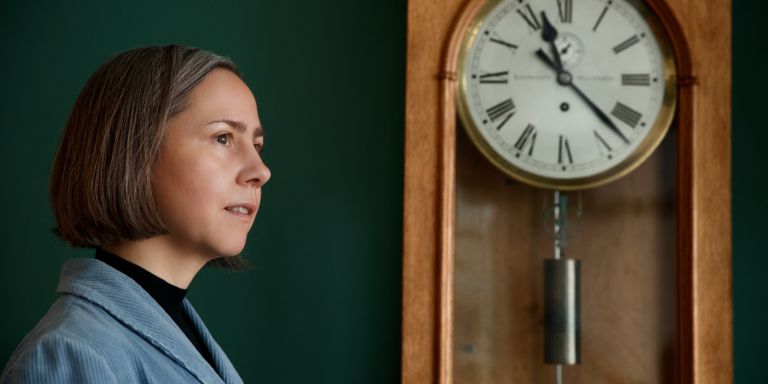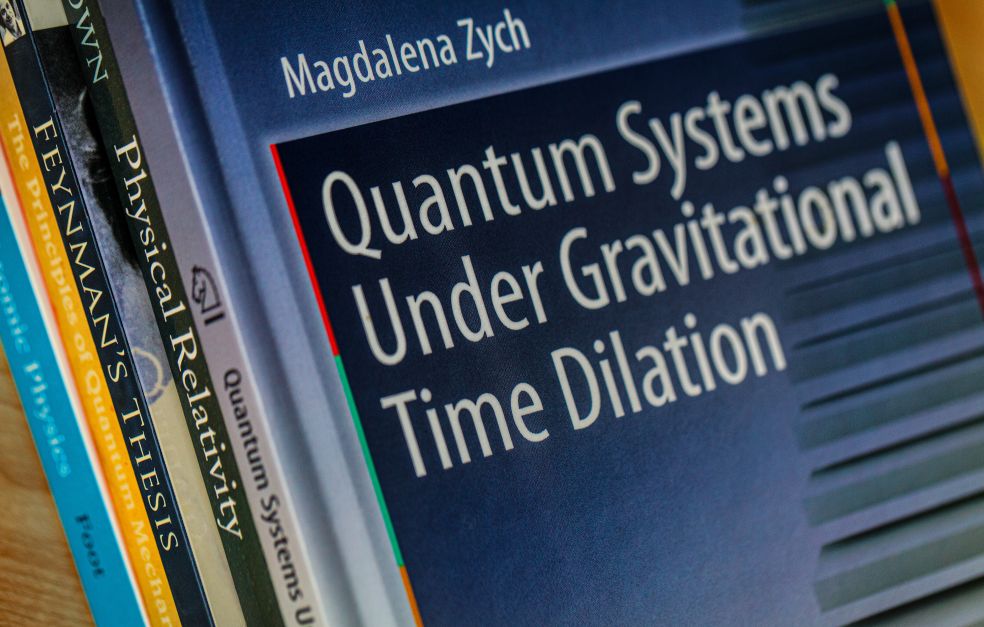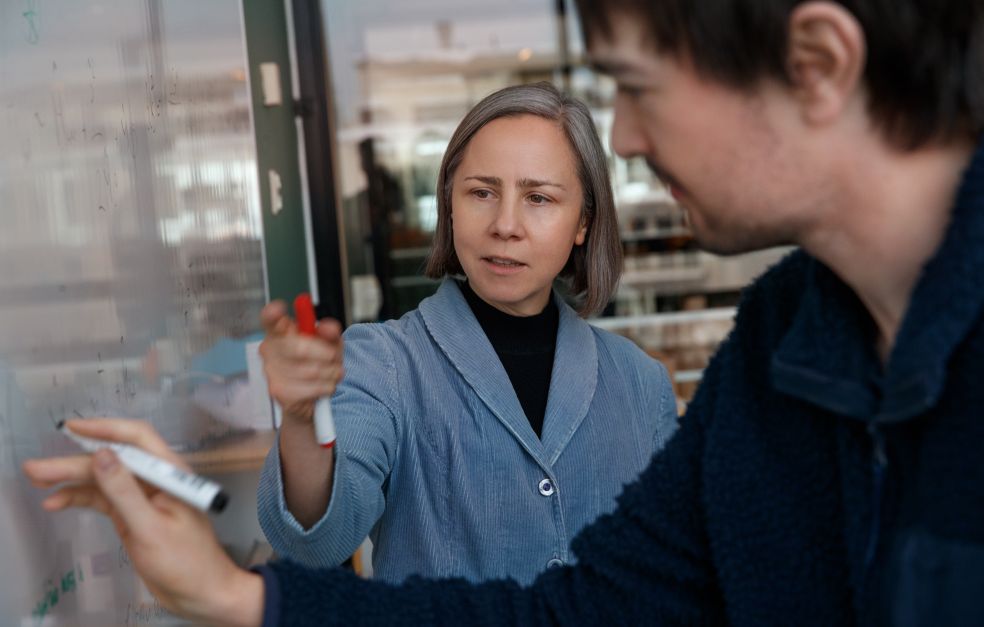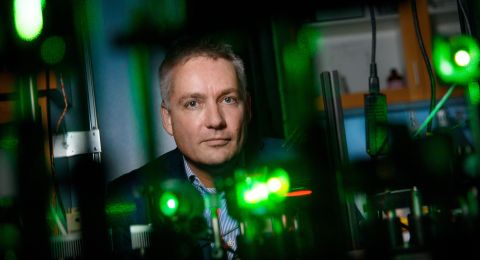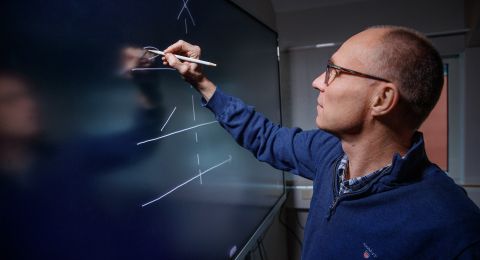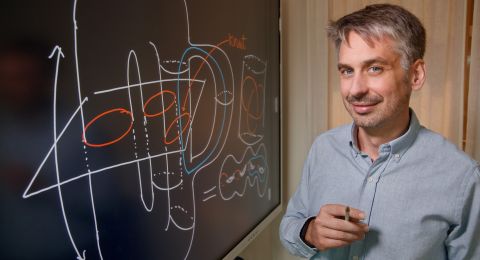No one has yet managed to combine Einstein’s general theory of relativity with quantum mechanics. Wallenberg Academy Fellow Magdalena Zych is rising to the challenge using a new mathematical framework in which time is the link between the theories.
Magdalena Zych
PhD, theoretical physics
Wallenberg Academy Fellow 2021
Institution:
Stockholm University
Research field:
Developing mathematical tools for simultaneous description of gravitational and quantum effects
Quantum mechanics is the tool for anyone wishing to describe the smallest components of our world – elementary particles – and how they interact with each other. But those also wishing to include the impact of gravity quickly run into trouble. No one has yet succeeded in reconciling quantum mechanics with Einstein’s gravitational theory.
“Many people argue that either quantum mechanics or gravitational theory will have to be modified to create a coherent theory. But others, including me, I think we need to find a more general description that incorporates both fields,” Zych says.
One obstacle on the route to a comprehensive theory is a lack of experiments whose results can only be explained using both theories. For this reason, Zych’s first step will be to develop a mathematical framework enabling her to propose the right experiments.
She has decided to focus on time and how it can be described using both quantum and gravitational theory.
Different speeds of time
Einstein’s gravitational theory predicts that time elapses more slowly close to a large object like a planet than it does in outer space. This accords with the theory of relativity, which holds that space and time are not separate independent entities – they form a continuum and impact each other.
A classic example of this is illustrated by the movie Interstellar. A team of astronauts visit an exotic planet with very high gravity. When they return to Earth they have aged more slowly than their children because time has elapsed more quickly on Earth than on the planet they visited.
The phenomenon is called time dilation, and also has an impact on Earth, e.g. on GPS satellites, whose clocks need to be adjusted in relation to the speed of time on Earth because of weaker gravity in space.
Zych wonders whether time dilation can also be measured at the scale described by quantum mechanics. This could pave the way for a comprehensive framework incorporating Einstein’s theory of relatively and quantum mechanics.
Measuring particles in superposition
Quantum mechanics states that all objects may exist in “superposition,” i.e. each particle may exist in two places, or two states, simultaneously. Superposition includes all properties of a particle, e.g. energy, speed and rotation. But the question is whether time is also included: if the particle is in superposition on two planets with different gravity, will time elapse at different rates in the two states?
Measuring this involves multiple challenges. Scale is one of them. The researchers need to create superposition of particles in the lab. Some progress has already been made, as Zych explains:
“American research teams have demonstrated micrometer-sized superpositions of atoms for an entire minute. A different team achieved nearly half-a-meter superposition but on 1 second timescale. Only ten years ago experiments of this kind were seen as pure science fiction.”
She now wants to combine results of this kind with recent developments in quantum technology. A new type of quantum sensor can be used to measure the impact of gravity on even smaller objects in superposition. But a mathematical framework must first be created to understand and interpret the results.
“Our goal is to develop the theoretical tools that are currently lacking so we can see how quantum mechanics and gravity meet. We will then be ready to ask experimental teams to conduct experiments capable of testing our framework,” Zych says.
New generations of atomic clocks
The framework is also needed to achieve further advances in quantum technology. New mathematical tools are required to take into account both quantum mechanical phenomena and gravity. This will be needed to develop new generations of atomic clocks, for example. Zych has already taken several steps toward developing parts of the framework, and the Wallenberg Academy Fellow grant will enable her work to continue.
In physics, progress is often about being in the right place at the right time – you gain access to key information that suddenly propels you forward.
Zych grew up in Poland. Having received her PhD in Vienna, she took up a postdoc position at the University of Queensland in Australia. This was where she laid the foundations for her research.
“Australia offers really good opportunities for young researchers to develop in their field. I planned to stay for only a year, but I ended up staying for seven. That period played an absolutely crucial role in my research.”
Even as a teenager Zych dreamed of a career in physics, albeit combined, unusually enough, with art science.
“The idea was to use the methods of modern physics to reveal the great mysteries of art history. I’ve always been drawn to problem solving. When I went on to study theoretical physics I was so inspired that I chose to postpone studying art history until I retired,” she says.
Text Magnus Trogen Pahlén
Translation Maxwell Arding
Photo Magnus Bergström

